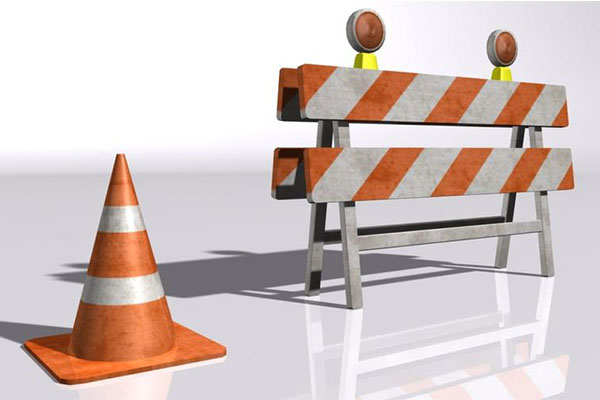Traffic Barrier: What You Need to Know
Traffic barriers are an essential component of modern road infrastructure. They play a vital role in ensuring the safety of both pedestrians and motorists. Whether you’re driving on the highway, crossing a busy street, or attending a special event, you’ve likely encountered traffic barriers without even realizing it.

What Is a Traffic Barrier?
A traffic barrier, in its most basic form, is a physical structure designed to control or limit the movement of vehicles and pedestrians. These barriers serve several important functions, including:
- Safety: Traffic barriers are primarily installed to enhance safety on the road. They act as a protective barrier, preventing vehicles from entering restricted areas, such as pedestrian walkways or opposite lanes of traffic. This separation helps reduce the risk of accidents and protects pedestrians from oncoming vehicles.
- Traffic Control: Traffic barriers help maintain order and control on the road. They guide the flow of traffic, especially in situations where lanes merge or diverge. They also assist in creating defined parking areas, managing pedestrian crossings, and controlling vehicle access to certain areas.
- Security: In addition to their role in traffic management, barriers are often used for security purposes. They can help safeguard sensitive areas, such as government buildings, airports, or event venues. Security barriers are designed to prevent unauthorized vehicle access, providing protection against potential threats.
- Aesthetic Enhancement: Some traffic barriers are designed with aesthetics in mind. These decorative barriers serve a dual purpose by enhancing the visual appeal of urban environments while providing safety and control.
Types of Traffic Barriers
Traffic barriers come in various types, each designed to meet specific needs and requirements. Here are some of the most common types of traffic barriers:
1. Concrete Barriers:
Concrete barriers are heavy, durable structures often used on highways and other high-speed roads. They are known for their ability to absorb impact and redirect vehicles away from danger. These barriers come in various shapes, including the New Jersey, F-shape, and T-shaped designs.
2. Guardrail Barriers:
Guardrail barriers are commonly found on the edges of roads, particularly on curves and bridges. They are typically made of metal or wood and serve to prevent vehicles from running off the road and potentially falling into ditches or ravines. Guardrails are designed to absorb and dissipate the energy of a vehicle impact.
3. Jersey Barriers
Jersey barriers are low, concrete structures shaped like a “J” or an inverted “L.” They are often used to separate lanes of traffic, protect pedestrians, and prevent head-on collisions. Jersey barriers are popular in construction zones and other areas where traffic needs to be controlled.
4. Water-Filled Barriers:
Water-filled barriers are temporary traffic control devices made of plastic or rubber. They are often used for short-term traffic management, such as during road construction or at special events. The barriers are filled with water, making them easy to install and remove as needed.
5. Bollards
Bollards are short, sturdy posts typically made of metal or concrete. They are frequently used to create a physical barrier to protect pedestrians, buildings, and other structures from vehicle intrusion. Bollards come in various styles, from plain and functional to decorative and aesthetically pleasing.
6. Cable Barriers
Cable barriers are a flexible, high-tension system consisting of steel cables supported by posts. They are often used in the median of divided highways to prevent vehicles from crossing over into oncoming traffic. Cable barriers are designed to absorb the energy of a collision and redirect the errant vehicle.
7. Crash Cushions
Crash cushions are safety devices designed to protect motorists from hitting fixed objects, such as bridge piers or toll booths. They are typically filled with energy-absorbing material to minimize the impact force during a collision, reducing the risk of injury.
8. Decorative Barriers:
Decorative barriers are designed with aesthetics in mind. They combine functionality with visual appeal and are often used in urban environments to enhance the overall look of streets and public spaces. These barriers can come in various shapes, materials, and colors.
The Importance of Traffic Barriers
Traffic barriers are essential for maintaining safety and order on our roadways. They offer several key benefits:
- Safety Enhancement: By separating vehicles and pedestrians, preventing lane departures, and minimizing head-on collisions, traffic barriers play a significant role in reducing road accidents and associated injuries.
- Traffic Flow Control: Barriers help regulate the flow of traffic, preventing congestion and chaos, particularly in high-traffic areas, construction zones, and event venues.
- Security: Security barriers offer protection against potential threats, such as terrorist attacks or unauthorized vehicle access to sensitive areas. They are essential for safeguarding critical infrastructure and public spaces.
- Aesthetic Improvement: Decorative barriers contribute to the overall aesthetic appeal of urban environments, making cities and streets more visually pleasing and enjoyable.
- Versatility: With a wide range of barrier types available, they can be adapted to suit various needs, from highway safety to urban beautification.
Conclusion
Traffic barriers are an integral part of our road infrastructure, serving various purposes such as safety enhancement, traffic flow control, security, and aesthetic improvement. Understanding the different types of traffic barriers and their functions is crucial for ensuring the safety and efficiency of our roadways. Whether you’re driving down a highway, walking through a bustling city, or attending a special event, you can rest assured that traffic barriers are there to protect and guide you.

